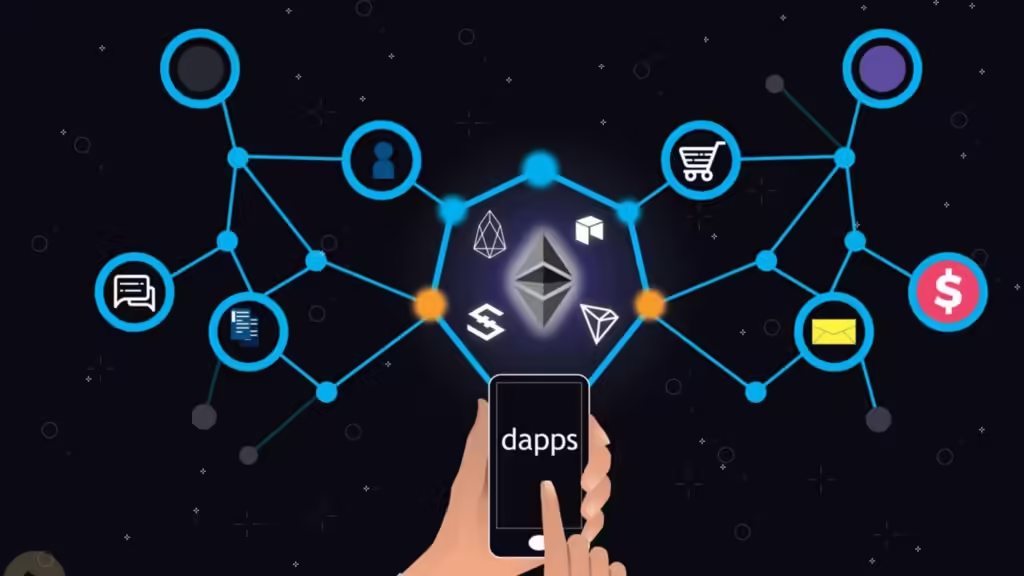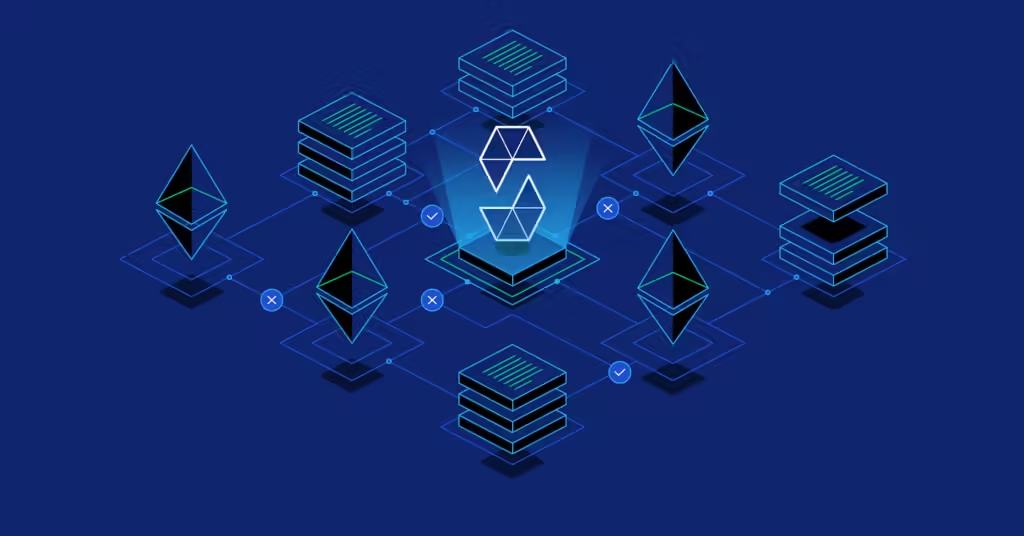The evolution of Web3 continues to reshape the future of the internet, offering decentralized control, trustless systems, and more security for users. As developers, we now have the opportunity to build decentralized applications (dApps) that leverage blockchain technology, smart contracts, and decentralized storage solutions to create applications that are both scalable and secure.
In 2024, Web3 development has matured, with new tools, platforms, and frameworks making it easier for developers to create decentralized apps. From improved scalability solutions to enhanced security protocols, the Web3 ecosystem is evolving rapidly. In this post, we’ll explore what it takes to build secure, scalable dApps in 2024, and the key technologies you need to focus on.
Key Web3 Technologies in 2024
To understand how to develop secure and scalable decentralized applications, it’s important to get familiar with the core technologies shaping Web3 development in 2024:
1. Blockchain Platforms for dApps
The foundation of any decentralized application is the blockchain. In 2024, popular blockchain platforms like Ethereum, Solana, and Polkadot continue to evolve, offering developers robust environments for building dApps. Ethereum’s Layer 2 scaling solutions like Optimism and Arbitrum are critical in addressing the scalability challenges by reducing gas fees and speeding up transactions.
• Ethereum 2.0: The transition to Ethereum 2.0 with proof-of-stake consensus and sharding technology is pivotal for developers focused on reducing the environmental impact and improving transaction throughput.
• Polkadot and Interoperability: Polkadot’s parachain model continues to enable cross-chain communication, providing opportunities to build dApps that can interact across multiple blockchains.
Internal Link: Read more on our Ethereum 2.0 guide for dApp developers.

2. Smart Contracts: Solidity and Beyond
At the core of decentralized applications lie smart contracts, self-executing contracts where the terms are written directly into code. In 2024, Solidity remains the dominant programming language for writing Ethereum-based smart contracts, while Rust has gained traction with Solana and Polkadot.
• Smart Contract Security: With the rise of dApp development, ensuring the security of smart contracts is crucial. Tools like MythX and OpenZeppelin have become essential for auditing and securing smart contract code, helping to prevent common vulnerabilities such as reentrancy attacks and integer overflows.
External Link: Learn more about smart contract security auditing with OpenZeppelin.

3. Decentralized Storage Solutions
Traditional web applications rely on centralized databases to store user data. Web3 applications, however, use decentralized storage solutions like IPFS (InterPlanetary File System) and Filecoin. These technologies ensure that data is distributed across multiple nodes, eliminating single points of failure and enhancing privacy.
• IPFS in Action: Using IPFS, developers can store data in a decentralized manner, making applications more resilient against data breaches and censorship.
• Filecoin: As an incentive layer on top of IPFS, Filecoin allows developers to store large datasets securely and accessibly, with built-in economic incentives.

Building Scalable dApps in 2024
As dApp adoption increases, scalability is a top concern for developers. In 2024, several key strategies and technologies are enabling scalable decentralized applications:
1. Layer 2 Scaling Solutions
One of the major bottlenecks in dApp development has historically been scalability, particularly on the Ethereum network. Layer 2 solutions like Optimistic Rollups and ZK-Rollups have drastically improved scalability by offloading transaction processing from the main Ethereum chain.
• Optimism: Optimistic Rollups use fraud proofs to process transactions faster and cheaper while still benefiting from Ethereum’s security.
• ZK-Rollups: Zero-Knowledge Rollups batch thousands of transactions and prove them on-chain in a more efficient manner, improving both transaction throughput and reducing gas fees.
2. Sharding and Interoperability
With Ethereum 2.0 and Polkadot’s parachain model, sharding has become an essential mechanism for improving blockchain scalability. Sharding divides the blockchain into smaller, more manageable parts, enabling parallel processing of transactions.
• Sharding on Ethereum: Sharding helps Ethereum handle more transactions per second, providing the infrastructure necessary to scale dApps globally.
• Interoperability: Polkadot enables dApps to communicate across different blockchains, opening up new possibilities for cross-chain applications, where data and assets can be transferred seamlessly between networks.
3. Decentralized Autonomous Organizations (DAOs)
In 2024, DAOs are increasingly integrated into dApp development, particularly when it comes to governance. A DAO allows decentralized decision-making in applications, enabling users to vote on important decisions using tokens.
• DAO Integration: When building a scalable dApp, incorporating DAO structures can enhance community involvement and enable decentralized governance, creating more robust and transparent platforms.
Internal Link: For more on DAOs, check out our post on Building DAO-based dApps.
Ensuring Security in Web3 Development
Security is a critical focus for Web3 developers, as decentralized applications inherently handle valuable data and assets. To build secure dApps in 2024, follow these best practices:
1. Smart Contract Audits
As smart contracts are immutable once deployed, it’s essential to audit your contracts thoroughly. Tools like MythX, Slither, and Remix IDE offer automated auditing capabilities that can detect vulnerabilities before deployment.
• Best Practice: Always run multiple audits and have a peer-review process for critical smart contracts that handle user funds or sensitive data.
2. Multi-Signature Wallets for Security
When handling valuable assets, multi-signature wallets provide an additional layer of security. Multi-sig wallets require multiple private keys to authorize transactions, reducing the risk of a single point of failure.
• Gnosis Safe: Gnosis Safe remains a popular choice in 2024 for managing assets securely within decentralized applications, ensuring that no single entity can act without approval from multiple parties.
3. Avoiding Common Vulnerabilities
Developers must be aware of common smart contract vulnerabilities such as reentrancy attacks, integer overflows, and front-running. Tools like OpenZeppelin offer pre-built libraries that help prevent these issues by providing secure implementations of common patterns.
Best Practices for Web3 Developers in 2024
To thrive in the Web3 development landscape of 2024, keep the following best practices in mind:
• Use Reliable Frameworks: Frameworks like Hardhat and Truffle have evolved to streamline the development process for dApps. These tools offer powerful testing environments and deployment automation for decentralized applications.
• Test on Multiple Blockchains: With the rise of cross-chain dApps, testing your application across multiple blockchain platforms like Ethereum, Solana, and Polkadot is crucial to ensure it performs consistently.
• Stay Up-to-Date with Protocol Changes: As blockchain protocols continue to evolve, keeping up-to-date with the latest updates and improvements (e.g., Ethereum’s Merge and Solana’s Proof-of-History) is essential to ensure your dApp remains compatible and efficient.
Conclusion: Building the Future with Secure and Scalable dApps
In 2024, Web3 development is at the forefront of innovation, enabling developers to create decentralized applications that are secure, scalable, and future-proof. By leveraging technologies such as Ethereum’s Layer 2 solutions, smart contract auditing tools, and decentralized storage, developers can build dApps that provide users with enhanced security, privacy, and control over their data.
As the ecosystem continues to evolve, staying informed about the latest technologies and best practices will be crucial for building dApps that can scale globally and withstand the security challenges inherent in decentralized systems.

